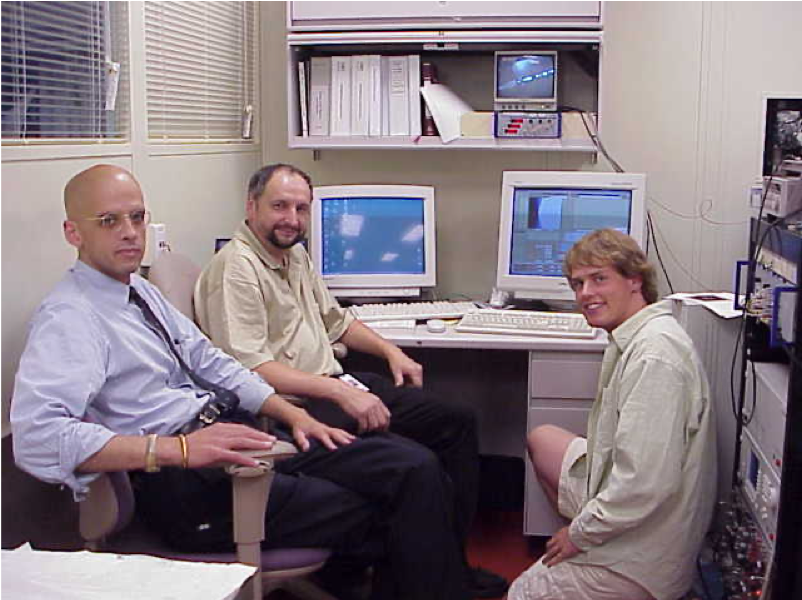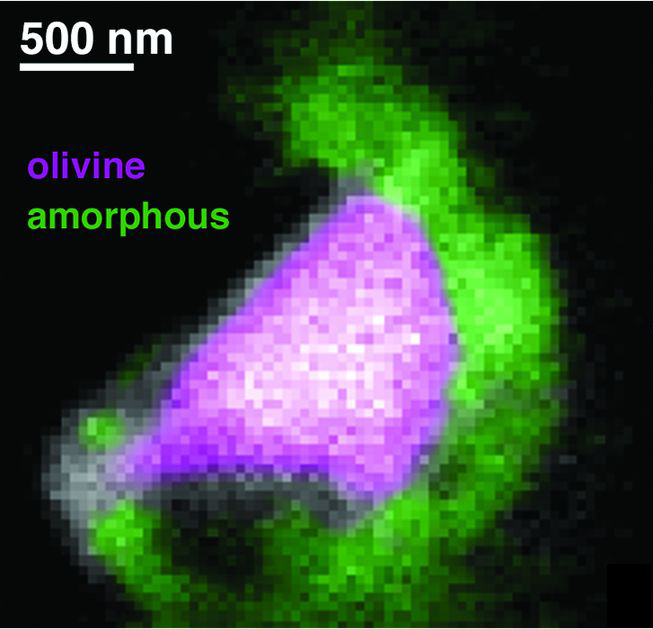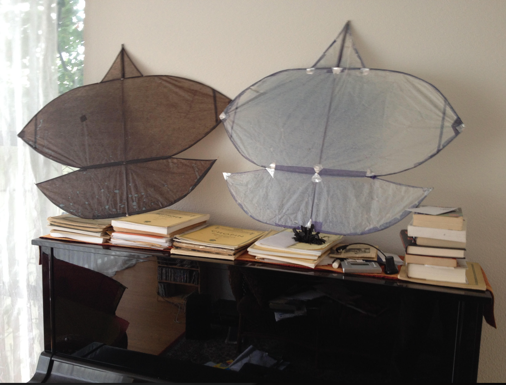David Kilcoyne was a longtime member of the ALS community, working on a number of different beamlines starting in 1999. He passed away in June 2022 and will be missed dearly.

As a young boy in Lahore, Pakistan, David Kilcoyne would fly kites on the rooftop, a pastime his family worried would have him toppling over the edge of the house. When he did exit the house, it was by more conventional means, but still in search of adventure.

“He was a cheerful and happy little boy, always busy playing with whichever playmates he could find and wandering about in our neighborhood in pursuit of whatever interested him,” recalled his sister, Ruth Kilcoyne Fulcher. “At the end of the day, he invariably had to be searched for and brought home!”
At home, his curiosity took on a mechanical bent. David’s father was dismayed to find that he’d taken apart the alarm clock—until David reassembled it perfectly. “We also have memories of him making homemade radios in his bedroom and it was fortunate he had his own room because it looked somewhat like a laboratory most of the time!” said Ruth.
In time, the Kilcoyne family moved to the UK, and several years later, to Australia. David’s curiosity and mechanical acumen continued to be honed. After earning his PhD from the University of Sydney, he worked in Europe, Australia, and across North America.

It was while David was working for an architectural firm in Berlin that Harald Ade, a physics professor at North Carolina State University, recruited him to develop new instrumentation at the Advanced Light Source (ALS). At Beamline 5.3.2, the team developed a new type of soft x-ray scanning transmission microscope (STXM), enabling researchers to perform high-brightness experiments on dedicated bend magnet beamlines.
David later joined the ALS officially, his passion for his work leading then-associate beamline scientist Bruce Rude to wonder if David should “switch to decaf.” Rude soon realized the source of the intensity: “a youthful exuberance that David maintained for the entire time that I knew him.” Together, they grew the program. “He had the patient tenacity, mechanical intuition, steady hand, and skills to take the scanning transmission microscopy effort at the ALS from a possibility to the highly successful program that it is,” Rude added. The Users’ Executive Committee also recognized David’s efforts, presenting him and his colleagues with the Klaus Halbach Award for Innovative Instrumentation in 2002 and 2010.

In addition to ALS colleagues, David worked with users from all over the world, some of whom brought samples from out of this world. George Cody was impressed by David’s “incredibly broad passion for science and, as it turns out, the analysis of extraterrestrial solids.” A staff scientist at the Carnegie Institution for Science, Cody recently analyzed samples returned from the Japanese Space mission to the asteroid Ryugu—analysis he performed with David. Brad De Gregorio, a staff scientist at the U.S. Naval Research Laboratory, worked with David on analyzing comet dust samples returned to Earth as part of NASA’s Stardust mission and other NASA samples. “We worked doggedly to ensure we were collecting high quality and accurate STXM data,” he explained, and always enjoyed their chats.
Many users considered David to be a fount of information and turned to him for creative solutions. He counseled David Osborn on the design of an apparatus requiring a door that sealed completely but still opened easily. “They worked perfectly the first time,” marveled Osborn, a scientist at Sandia National Laboratories.
A common thread to the stories about David was how helpful he was. “David generously provided absolutely essential assistance and guidance for me getting started with soft x-ray microscopy,” said Berkeley Lab Staff Scientist Mary Gilles. She added, “He helped numerous postdocs and students over the years.”
Indeed, David was passionate about mentoring. He frequently reminded ALS Staff Scientist Sujoy Roy that they had to take care of the students and reach out to minorities and marginalized people. Roy shared, “David knew what it was like to be an outsider,” citing his experiences growing up on three different continents. One of the students David mentored, Terry McAfee, is now a senior scientific engineering associate at the ALS. He credits David for guidance in both scientific and life skills. “He expected the best from me, and brought it out of me when I couldn’t find it,” said McAfee.

David shared his knowledge and passions outside of work as well. He taught ALS Research Scientist Antoine Wojdyla how to construct kites, worked on house projects with Berkeley Lab Staff Scientist David Shuh, and ate many gourmet meals with Photon Science Development colleague Tony Warwick. Through his varied interests, he built longstanding friendships among the team. “He blessed us with the seeds of the culture of comradeship,” said ALS Staff Scientist Alexei Federov. ALS Director Steve Kevan paid tribute to David’s quirks, which always kept things interesting. “I am lucky to have known and interacted with him continuously for nearly 40 years,” Kevan explained. “And yes, he wore a tie every day back then, too.”
David died at home of natural causes at the age of 68. He is survived by his loving sisters, Jenny, Patricia, and Ruth, their families, and the untold number of colleagues and friends whose lives he touched. We will remember him when we see the equipment he designed around the experimental floor, as we tend the succulent plants he left behind, and when we pick up his books that now furnish a reading nook at the ALS. May his spirit dance in the wind like one of his exquisite kites, ebullient jumps and daring swoops in front of the brilliant San Francisco Bay sunset.
Contributors: Ruth Kilcoyne Fulcher, Jenny Beatty, Harald Ade, Bruce Rude, George Cody, Brad De Gregorio, David Osborn, Mary Gilles, Sujoy Roy, Terry McAfee, Antoine Wojdyla, David Shuh, Tony Warwick, Alexei Federov, Steve Kevan, Cindy Lee
See also:
- Memories of David Kilcoyne by His Sister Ruth
- Memories of David Kilcoyne from the ALS Community including the full messages from the contributors listed above. To share a message and/or photos on this page, please fill out this form. Questions? Contact alscommunications@lbl.gov